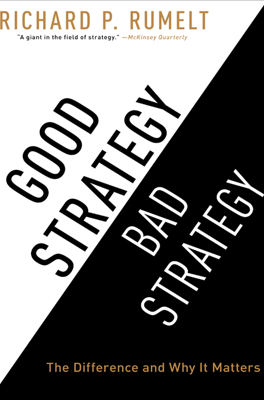Keeping Your Head
Independence in Strategy Crafting and the Pitfalls of Following the Crowd
Creating an Independent, Insightful Strategy
Effective strategy requires an independent analysis that doesn't merely follow popular sentiments or mainstream movements. Unlike bad strategy, which often succumbs to crowd mentality and social herding, good strategy develops from careful assessment and unique insights into the situation at hand.
Case Study: Global Crossing
Global Crossing's ambitious project to lay transatlantic cables demonstrates the importance of assessing fundamental business aspects rather than getting carried away by market enthusiasm. Despite initial success and a market valuation that skyrocketed, the industry structure was flawed. Characteristics such as non-proprietary technology, perfect competition, and a product that was a commoditized utility led to an unsustainable business model. The dramatic increase in cable capacity and technology turned the business towards overcapacity, driving prices down significantly. A simple industry analysis (Porter's Five Forces) could predict the eventual price collapse and loss of profitability, challenging the optimistic stock market valuation.
The Danger of Ignoring Fundamental Industry Structure
The case illustrates how substituting popular market euphoria for genuine strategic insight leads to poor strategy. It underscores the risk of ignoring fundamental industry structure because of misleading high market valuations and exuberant analyst predictions.
Social Herding, Inside View, and Financial Crises
Financial Crisis of 2008: A Case of Social Herding and Inside View
The financial crisis of 2008 serves as a severe example of the dangers of social herding and the inside view in strategic financial management. Mass adoption of aggressive credit practices led to the largest credit bubble in history, which burst dramatically. Key failures included the inability to appreciate the risk inherent in new financial instruments and over-reliance on previous short-term stability as an indicator of low risk (the smooth-sailing fallacy).
Contributing Factors to the Crisis
- Engineering Overreach: Designing financial systems and instruments without fully understanding their risk and failure modes.
- Risk-Seeking Incentives: Structures that encouraged excessive risk-taking because the downside was borne by others.
- Social Herding: Decisions based on the assumption that other market participants possessed better fundamental insight.
- The Inside View: The widespread belief among financial leaders that their modern tools of risk management were superior, coupled with a dismissal of historical and external data suggesting otherwise.
Reflection on Human Judgments in Strategic Follies
The 2008 financial catastrophe, akin to historical man-made disasters, was not merely a result of complex financial instruments but also the collective failure in judgment and strategic foresight. This highlights the critical need for rigorous, independent strategic thinking rather than relying on prevailing market beliefs or past trends that appear stable.
Learning from History and Applying External Perspectives
Successful strategists and leaders take into account broader historical lessons and external perspectives to mitigate biases like the inside view and social herding. Evaluating the real-world evidence and historical data can provide preventive insights and foster more robust, informed strategic decisions.
The emphasis on understanding intrinsic industry structures and the risks of groupthink in strategy formulation serves as a crucial lesson for businesses. By valiantly evaluating genuine market conditions and past precedents, leaders can formulate strategies that are not only innovative but also grounded in realistic assessments, shielding their organizations from potentially disastrous follow-the-crowd strategies.
